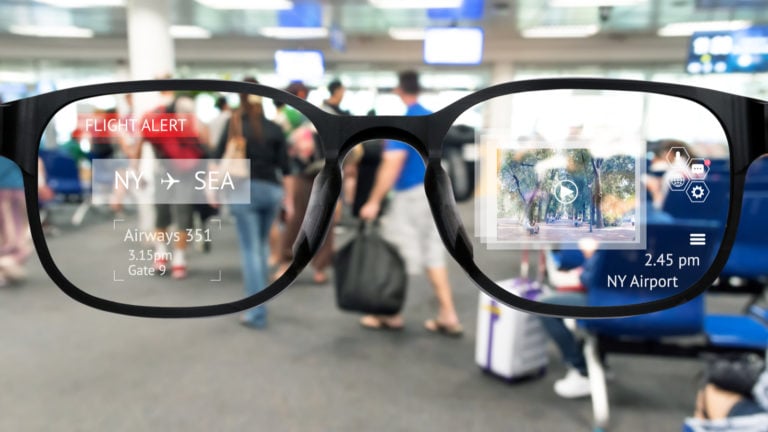You may not realize it yet, but the smartphone is on its way out.
That sleek, glowing rectangle that’s been glued to your hand for over a decade—the symbol of the Mobile Internet Era—is heading for obsolescence.
Why? Because we’re entering the Age of Artificial Intelligence—and AI doesn’t want your thumbs or your screen.
It wants your eyes, your ears, and your intent.
And to deliver on that vision, it needs a new device.
The iPhone’s Successor: Smart Glasses
The next dominant tech form factor won’t live in your pocket. It’ll sit on your face.
This isn’t some futuristic prediction—it’s already happening.
Here’s what went down just this week:
- Alphabet (GOOGL) announced a $150 million partnership with Warby Parker to launch AI-powered smart glasses by 2026.
- OpenAI acquired Jony Ive’s AI hardware startup for $6.4 billion. (Ive designed the original iPhone.)
- Ive will lead OpenAI’s hardware efforts to create a new generation of AI-native devices.
Meanwhile, Meta Platforms (META) is pushing its Ray-Ban smart glasses hard—sales tripled this year. It’s also developing Orion, a stealth project for finger-controlled AI eyewear.
Amazon (AMZN) is still shipping Echo Frames, leveraging Alexa as its voice-first interface for ambient computing.
And yes, Apple (AAPL) is reportedly extending Vision Pro into a lightweight, consumer-grade smart glasses format.
This isn’t a product cycle. It’s a platform shift.
And Big Tech knows: the company that replaces the smartphone wins the next 20 years.
Why AI Demands a New Interface
The smartphone ruled the 2010s because it matched the needs of the mobile internet: apps, touchscreens, scrolling, notifications.
But AI isn’t built for that.
AI thrives on real-time interaction, not manual input. It listens. It observes. It acts on your behalf. It’s ambient, proactive, and often invisible.
That’s why AI needs a screenless interface.
Smart glasses—equipped with cameras, microphones, displays, and context-aware AI—are the ideal interface for the ambient computing era.
They don’t require unlocking. They don’t pull you out of your world. They layer intelligence on top of your reality.
This is the leap from tap to presence. From input to interaction.
How to Invest in the AI Glasses Boom
Back in 2007, Apple didn’t just launch the iPhone—it created a $10 trillion mobile ecosystem.
That included:
- App platforms (think Meta and Spotify (SPOT))
- Networking infrastructure (Cisco (CSCO), Broadcom (AVGO), Qualcomm (QCOM))
- Component suppliers (Skyworks (SWKS), Cirrus Logic (CRUS), Corning (GLW))
You didn’t need to invest in Apple alone to win—you could ride the ecosystem.
The same strategy applies to AI glasses. Here are the top companies poised to profit from the shift:
Key AI Glasses Suppliers and Enablers
- Arm Holdings (ARM) and Qualcomm (QCOM): Chipmakers likely to power most AI glasses.
- Nvidia (NVDA): Supplies AI accelerators that will handle on-device and cloud processing.
- Sony Group (SONY): Industry leader in camera sensors, essential for computer vision.
- Lumentum (LITE), STMicroelectronics (STM), Himax Technologies (HIMX): Optical components, LiDAR, and gesture sensors.
- Ambarella (AMBA): Known for computer vision chips critical to spatial computing.
- Corning (GLW): Already supplies Apple—well-positioned for smart glass and optics.
- SoundHound AI (SOUN) and Twilio (TWLO): Voice interfaces and AI communication layers.
- Unity Software (U): Provides real-time 3D rendering engines for AR overlays and spatial OS.
- Okta (OKTA): Identity and security management for AI-native platforms.
The Big Picture
The AI glasses movement is about more than convenience. It’s a new computing paradigm—ambient, hands-free, always-on.
And it’s not science fiction.
With billions flowing into R&D and major players making their move, AI glasses could become the new standard interface for computing—just as smartphones once were.
The companies that help build, power, and scale this ecosystem could lead the next wave of generational tech gains.
Bottom Line
The smartphone changed how we accessed the internet.
AI glasses will change how we experience reality.
And just like last time, the biggest winners may not be the device makers—but the ecosystem builders.
The Mobile Internet Era is ending. The Ambient AI Era is beginning.
The iPhone is dead. Long live AI glasses.
On the date of publication, Luke Lango did not have (either directly or indirectly) any positions in the securities mentioned in this article.
P.S. You can stay up to speed with Luke’s latest market analysis by reading our Daily Notes! Check out the latest issue on your Innovation Investor or Early Stage Investor subscriber site.


